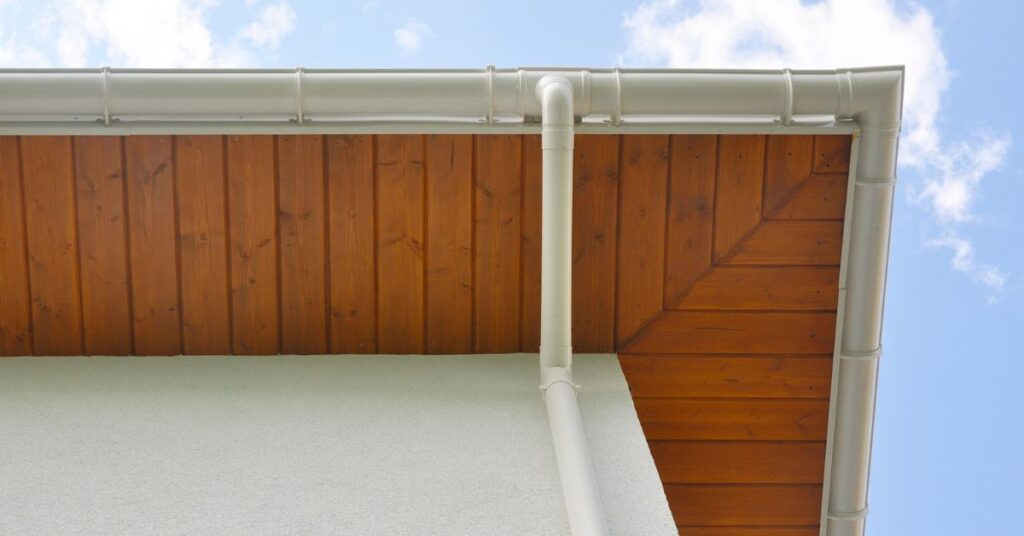What You Should Know About Fascia and Soffit Replacement

Table of Contents
Fascia and soffit are key components of your home, playing a crucial role in protecting your roof and maintaining the overall integrity of your property. They might be small trim components, but they serve an important function. If something goes wrong with your fascia and soffit, it can lead to significant water damage, mold growth, pest infestations, and more. Wallcraft Exterior Solutions is a leading fascia and soffit replacement company serving Metro Atlanta and North Florida. We can help you ensure these vital parts of your home are in top shape.
What Are Fascia and Soffit?
Fascia
Fascia is a long, straight board that runs along the roof’s lower edge, just beneath the shingles or tiles. It is mounted at the point where the roof meets the house’s outer walls and is often where the gutters are attached. The fascia board plays multiple roles in your home’s roofing system:
- Support for Gutters: It provides a stable foundation for securing the gutters, helping them channel rainwater away from your roof and foundation.
- Protection: The fascia protects the roof’s edges from moisture and pests, preventing water from seeping into the roof deck or rafters.
- Aesthetics: It gives your roof a finished appearance by covering the rough edges of the rafters.
Fascia boards are typically made of wood, aluminum, or PVC, each offering varying durability and maintenance requirements. Wood fascia has a classic look but requires regular painting or staining to prevent rot. Aluminum and PVC fascia are more durable and offer better resistance to moisture and insects.
Soffit
Soffit is the material that covers the underside of the roof overhang, where the roof meets the siding. It’s located between the roof edge and the house’s exterior wall. Soffit serves multiple important functions:
- Ventilation: Soffit often contains vents allowing airflow into the attic. Proper ventilation helps regulate temperature and moisture levels in the attic, preventing mold growth and reducing the risk of ice dams forming in colder climates.
- Protection: It protects the underside of the roof eaves from moisture, pests, and debris, helping extend the roof’s lifespan.
- Aesthetics: Like fascia, soffit gives the roof a finished look, providing a clean and polished appearance.
Soffit is typically made of wood, vinyl, aluminum, or fiber cement. Vinyl and aluminum soffit are low-maintenance and moisture-resistant, while fiber cement soffit offers exceptional durability and fire resistance.
Not every home has soffit, as it depends on the roof style. Houses with open eaves may not have soffit boards, but they can still benefit from fascia to protect the roof edges.
Why Are Fascias and Soffits Important?
Fascia and soffit protect your home in several critical ways:
Water Protection
Fascia and soffit work together, sometimes with a gutter system, to prevent water from running down the siding and causing water damage. The fascia board supports the gutters, which channel water away from the roof edge and into downspouts. Rainwater would pour directly off the roof without fascia and soffit, leading to potential leaks, staining, and mold growth on your walls. By keeping water out of vulnerable areas, they protect the structural integrity of your home.
Pest Prevention
Soffits prevent pests like birds, squirrels, and insects from entering your roof and attic. If soffit boards are damaged or missing, birds and squirrels can make nests in the spaces between the roof edge and the siding. Insects, such as wasps and bees, can also build nests in these gaps. Properly installed soffits create a tight seal that blocks these unwanted pests from entering your home.
Ventilation
Soffits with vents allow air to flow into the attic, helping regulate temperature and moisture levels. Proper ventilation is essential to preventing condensation buildup in the attic, which can lead to mold growth and rot. Ventilated soffits keep your attic dry, reducing the risk of ice dams forming in colder months.
Structural Integrity
Fascia provides structural support to the roof’s edge and serves as a mounting point for the gutters. A solid fascia board keeps gutters firmly attached, efficiently directing water away from the house. Damaged fascia can cause gutters to sag or detach, leading to water infiltration around the roof and foundation.
Signs You Need Fascia and Soffit Replacement
Depending on material quality and local climate, Fascia and soffits generally need to be inspected, repaired, or replaced every 10-15 years. Here are some signs that indicate you need fascia or soffit replacement:
Rotting Wood
If you notice any wood rot on your fascia or soffit, it indicates that they need replacing. Rot occurs when moisture penetrates the wood, often due to poor gutter maintenance or leaks in the roof. Left untreated, rot can spread to other parts of the roof structure, causing extensive damage.
Leaks
Water stains or leaks around the roof edge indicate damage to the fascia or soffit. Leaks may occur if gutters are clogged or improperly installed, causing water to overflow and damage the fascia board. Similarly, damaged soffits can allow water to seep into the roof structure.
Peeling Paint
Peeling or flaking paint can signal moisture buildup, which may lead to rot. Paint is often the first layer of protection against water, so if it starts peeling, it’s a sign that water penetrates the wood beneath. Repainting may temporarily hide the issue, but addressing the underlying moisture problem is crucial.
Pest Infestation
If you see birds, squirrels, or insects entering your roof, they may get in through damaged soffit or fascia. Birds and small mammals can squeeze through tiny gaps in damaged soffits, while insects often find their way through cracks in the fascia.
Gutter Issues
Gutters that sag, leak, or become loose could be caused by damaged fascia. If the fascia board is weak or rotting, it won’t provide the necessary support to attach gutters securely. Sagging gutters may indicate that fascia boards are overloaded with debris or water.
Ventilation Problems
If your attic feels stuffy or humid, it may be due to blocked or damaged soffit vents. Poor ventilation can increase moisture levels, causing mold growth and wood rot. Ensure soffit vents are clean and unblocked to promote airflow into the attic.
Fascia, Soffit, and Gutter Replacement with Wallcraft Exterior Solutions
Fascia and soffit are integral to your gutter system, efficiently ensuring water flows away from your home. Wallcraft Exterior Solutions offers comprehensive fascia, soffit, and gutter replacement services to improve your home’s functionality and rain defense. With over 30 years of experience, their team will assess your current setup and provide the best solution to protect your home.
Choosing a quality fascia and soffit replacement company is crucial for protecting your home’s structure and ensuring proper ventilation. If your fascia and soffit show signs of wear or damage, it’s time to act. Wallcraft Exterior Solutions specializes in replacing these components while ensuring your gutters are firmly attached and functioning optimally. Contact us today to schedule a consultation!
FAQ About Fascia and Soffit Replacement
Replacing fascia and soffit is not an easy DIY task due to the need for proper alignment, measurements, and safety considerations. It requires specific tools and expertise to ensure that the new components fit securely and provide proper ventilation. Hiring a professional is recommended for a long-lasting and effective installation.
Yes, you can replace soffit and fascia without replacing your siding. However, the soffit and fascia boards must be carefully removed without damaging the siding. Professionals can handle this task to ensure seamless integration with your existing siding.
In most cases, replacing the soffit requires removing the fascia first because the fascia board typically holds the soffit panels in place. Once the fascia is removed, the soffit panels can be replaced, and the fascia can be reinstalled afterward.
The life expectancy of fascia and soffit depends on the material used and the local climate. Wood fascia and soffit can last 10-15 years with proper maintenance, while aluminum and vinyl soffit and fascia can last 20-40 years. High-quality fiber cement soffit can last over 50 years.
Yes, it’s possible to replace fascia and soffit without replacing your gutters. This requires careful planning, temporary removal of the gutters, and proper reinstallation. A professional will inspect the condition of your existing gutters to ensure they can be safely reinstalled after the fascia and soffit replacement.
